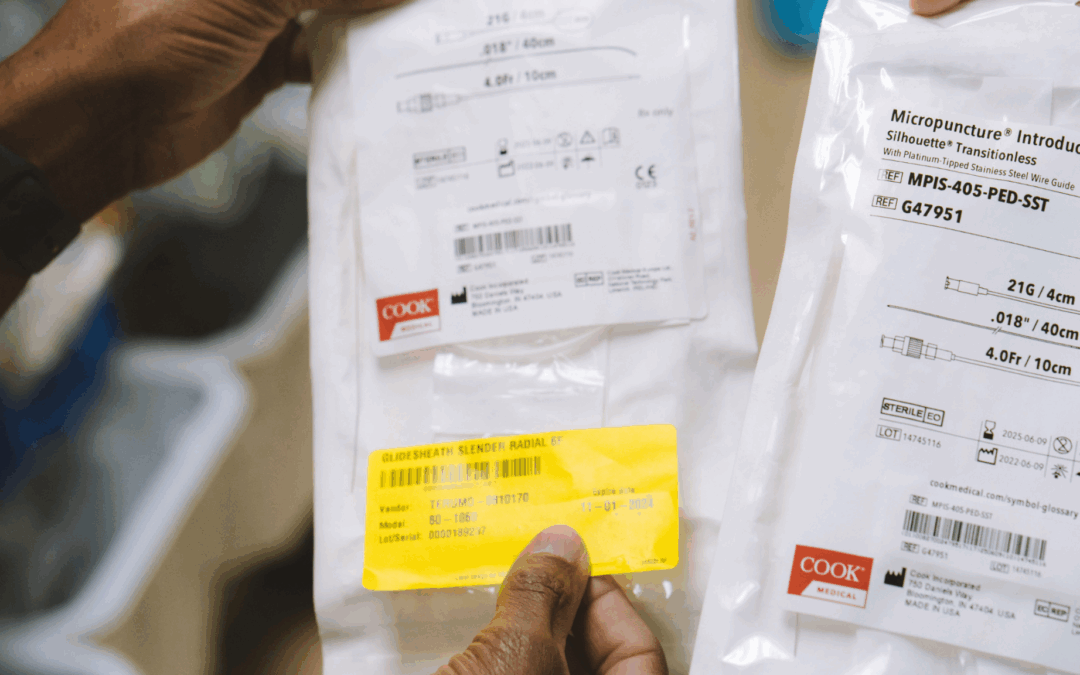Managing surgical inventory is a critical aspect of ensuring hospitals and healthcare facilities can deliver high-quality care. Inaccurate or inefficient inventory management can lead to costly delays, supply shortages, and even jeopardize patient safety. To avoid these challenges, healthcare providers must adopt effective strategies and advanced technology solutions. Insysiv offers a comprehensive product suite that streamlines surgical inventory management, providing powerful tools to optimize processes from start to finish.
In this guide, we’ll explore tips and best practices for optimizing surgical inventory management using Insysiv’s solutions, including TRACK, VECTOR, and VELOCITY.
Real-Time Inventory Tracking with TRACK
One of the most critical challenges in surgical inventory management is ensuring real-time, accurate tracking of supplies. Manual tracking methods often result in errors and discrepancies, but Insysiv’s TRACK solution offers real-time, automated inventory tracking to help mitigate these issues.
TRACK is a powerful and robust inventory system developed in collaboration with frontline hospital staff and supply chain experts. It leverages barcode and RFID technology to automatically capture product information with a single scan, ensuring documentation is consistent across multiple systems, including your electronic medical records (EMR). This removes the need for manual entries, reducing human error, and ensuring accurate real-time tracking of inventory.
Best Practice:
- Use TRACK for One-Scan Documentation: With a single scan, you can document product information in procedure logs, EMR systems, and reorder supplies. This eliminates the unnecessary double and triple documentation often found in cardiovascular labs and operating rooms.
- Utilize Automated Replenishment Alerts: TRACK sends automatic alerts when supplies reach low levels, ensuring timely reordering. This minimizes the risk of stockouts during critical procedures and helps maintain optimal inventory levels.
Implement Inventory Standardization
Standardizing inventory processes across departments is essential for reducing discrepancies and improving efficiency. Insysiv’s TRACK system enables healthcare providers to maintain consistency in managing surgical supplies across various departments.
Best Practice:
- Standardize Stock-Keeping Units (SKUs): TRACK allows facilities to create uniform SKUs, streamlining product identification and ordering across departments.
- Maintain Consistent Par Levels: TRACK’s real-time tracking ensures that all departments maintain appropriate par levels, preventing overstocking and minimizing excess inventory costs.
Additionally, TRACK’s RFID version allows for precise locational tracking, so you always know where your supplies are within the facility. This feature is especially useful in large hospital systems where inventory is spread across multiple labs or departments.
Optimize Supply Chain Management with Velocity
Efficient inventory management also depends on optimizing the entire supply chain, from procurement to usage. Insysiv’s VELOCITY analytics tool provides healthcare providers with valuable insights to forecast demand, track usage, and identify opportunities for savings.
VELOCITY builds on the data captured through TRACK to offer predictive purchasing algorithms, enabling hospitals to anticipate future needs and negotiate better vendor contracts. It also supports “virtual bulk buying,” where facilities can commit to purchasing supplies in bulk for future use, but pay for them only when they are needed.
Best Practice:
- Use Velocity for Demand Forecasting: VELOCITY analyzes usage trends by product category and physician, allowing hospitals to better predict future needs and make more informed purchasing decisions.
- Leverage Virtual Bulk Buying: By utilizing VELOCITY’s virtual bulk buy feature, hospitals can lock in savings by committing to a certain level of purchasing over time without the upfront financial burden.
Reduce Waste and Expired Stock with TRACK and Velocity
Managing expiration dates and minimizing waste is critical for cost savings and compliance. Insysiv’s TRACK system offers comprehensive expiration date tracking, ensuring that supplies are used before they expire, while VELOCITY provides insights into potential expiration risks in advance.
Best Practice:
- Utilize Expiration Date Tracking: TRACK sends alerts for items nearing expiration, helping facilities use products efficiently and reducing costly waste.
- Monitor Long-Term Expiration Risks: VELOCITY’s long-term forecasting tools allow hospitals to identify expiration risks early, enabling proactive management of inventory and coordination with suppliers to refresh expiring items.
Enhance Accountability and Compliance with TRACK
Accountability in surgical inventory management is key to maintaining compliance with healthcare regulations and preventing financial discrepancies. Insysiv’s TRACK system promotes transparency at every stage of the inventory process by automating data capture and integrating with existing hospital systems.
Best Practice:
- Conduct Regular Audits: TRACK’s data-driven auditing capabilities allow for routine inventory checks, ensuring accurate records and preventing discrepancies.
- Automate Data Capture: TRACK’s integration with EMR and other hospital systems automates the documentation process, eliminating manual data entry and ensuring compliance with regulatory standards.
Leverage Business Intelligence with VECTOR
Data is one of the most powerful tools available for improving inventory management, and Insysiv’s VECTOR business intelligence platform empowers hospitals to harness that data for actionable insights. Built on Microsoft Power BI, VECTOR provides hospitals with customizable dashboards and analytics to monitor inventory performance, costs, and usage trends.
Best Practice:
- Monitor Key Performance Indicators (KPIs): VECTOR provides real-time analytics on metrics such as inventory turnover, supply spend per physician, and cost per procedure. These insights help facilities identify inefficiencies and drive cost-saving decisions.
- Blend Data for Deeper Insights: VECTOR allows hospitals to integrate data from other systems (such as EMR or Materials Management) to analyze surgical inventory alongside patient demographics, case types, and other key factors.
Optimizing surgical inventory management is essential for maintaining efficiency, reducing costs, and improving patient care. Insysiv’s comprehensive product suite—TRACK, VECTOR, and VELOCITY—offers healthcare providers the tools they need to streamline their processes, gain deeper insights, and make data-driven decisions.
By implementing best practices such as real-time tracking, demand forecasting, waste reduction, and utilizing data analytics, hospitals can significantly improve their inventory management. These solutions not only enhance operational efficiency but also support long-term cost savings and compliance.
For more information on how Insysiv can transform your surgical inventory management, visit Insysiv.com and explore how TRACK, VECTOR, and VELOCITY can simplify your workflow and elevate your hospital’s performance.

